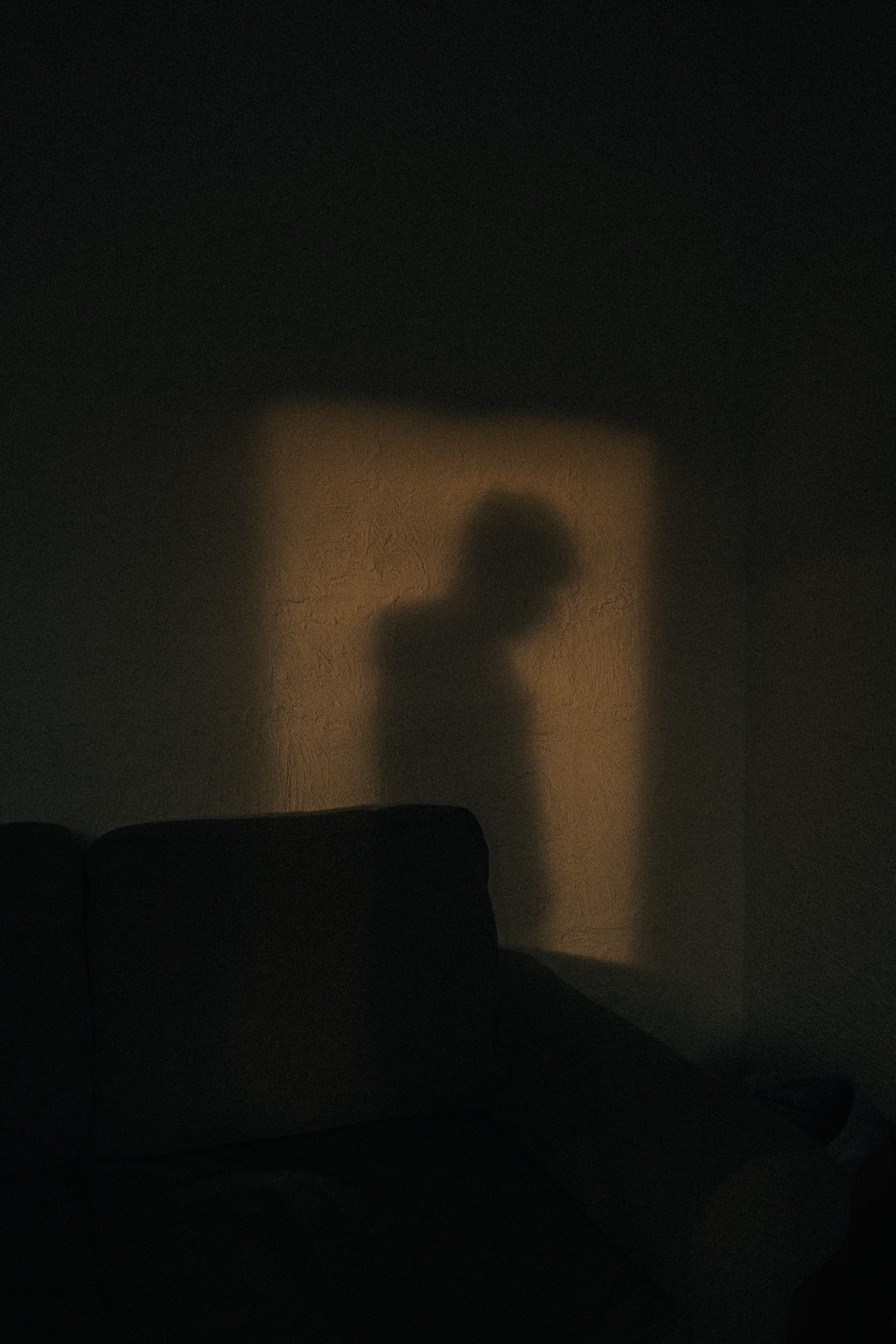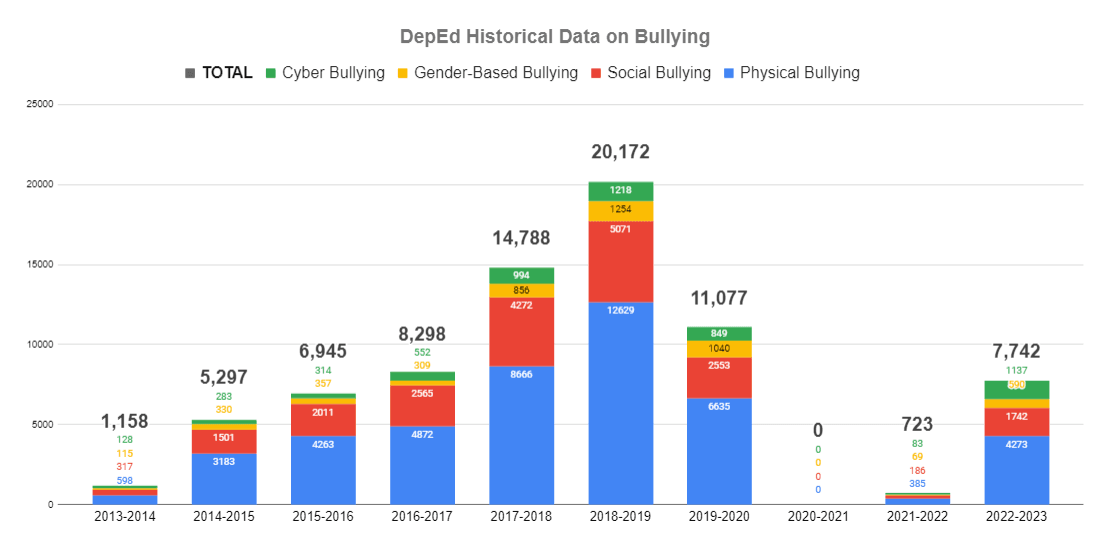Studies highlight 'alarming' prevalence of bullying in Philippine schools
DepEd urged to implement stronger reporting, monitoring mechanisms
The high incidence of bullying in Philippine public schools is increasingly alarming, according to several studies released on Thursday, June 13, focusing on bullying in the Philippines.

During an EDCOM 2 Sub-committee Meeting on Basic Education on Bullying and Home & School Environment, a series of studies titled “Understanding Bullying in Philippine Education: Impacts and Opportunities for Change” were presented.
A statement from the Second Congressional Commission on Education (EDCOM 2) highlighted the findings of several studies on bullying in the Philippines conducted by researchers from De La Salle University (DLSU), emphasizing the alarming prevalence of bullying in schools.
Striking findings
Through the partnership between DLSU and EDCOM 2, five studies on bullying were published.
Dr. Allan B.I. Bernardo, a distinguished university professor and university fellow from DLSU, led other scholars, including Katrina F. Resurreccion, Ma. Caridad H. Tarroja, Rene M. Nob, Macario O. Cordel II, Rochelle Irene G. Lucas, Minie Rose C. Lapinid, Thomas James Tiam-Lee, Geselle Manguiat, Althea Patricia Aranillo, Jim Rey R. Baloloy, Reinier Dave Zapanta, Elaine Marie D. Aranda, Joel C. Narvaez, Rosette D. Morga, and Patricia Mae A. Taba, in these studies.
Bernardo pointed out that one of the most striking findings in the Program for International Student Assessment (PISA) 2018 results was that the Philippines had the highest percentage of bullying among all participating countries and territories (OECD, 2019).
“This trend was also observed in the PISA 2022 assessment, although the percentage was lower in this round of assessment (OECD, 2023),” he added.
According to the PISA 2019 results, 65 percent of Filipino students reported being victims of any type of bullying at least a few times a month, with 40 percent being bullied frequently (once a week or more).
On the other hand, the PISA 2022 report states that one out of three Filipino students is being bullied in schools.
This translates to about 43 percent of girls and 53 percent of boys in the Philippines encountering bullying incidents multiple times a month. This is also much higher than the OECD average of 20 percent of girls and 21 percent of boys.
Congested public schools as bullying hotspots
The DLSU study highlighted how the school structure and environment, and the level of support they receive from adults, can predict exposure to bullying among students.
According to Nob et al., bullying is more prevalent in public schools with large class sizes, discriminatory teacher behavior, and lower levels of competition and discipline.
Bullying is also more widespread in public schools with a higher percentage of students coming from lower socioeconomic environments.
One of the studies developed a digital visualization tool using data from the 2019 PISA report to map bullying hotspots in the country.
According to the findings of Cordel et al., Regions XIII and IV-B MIMAROPA were identified to have the highest incidence of bullying, followed by Regions XII, V, and I.
The findings of Baloloy et al. revealed that Filipinos who are bullied often deal with mental health concerns like depression and anxiety and experience both traditional physical bullying and relational cyberbullying.
Other factors influencing bullying include psychosocial issues and the learner’s environment, such as school safety, relationships with their parents, and their prevailing attitudes towards bullying.
Reported bullying cases
Based on the data from the Learner Rights and Protection Office (LRPO) of the Department of Education (DepEd) as of June 10, 2024, a total of 7,742 cases of bullying were reported in School Year (SY) 2022-2023.
While the Anti-Bullying Law was passed in 2013, EDCOM 2 pointed out that the number of reported bullying cases surged from 1,158 to 20,172 in five years or from 2013 to 2018 based on the data from DepEd.

EDCOM 2 Co-Chairperson Rep. Roman Romulo pointed out that the law was passed in 2013.
“From then until last year, why weren't the reporting issues identified? The law is clear. DepEd knew the responsibilities that they had. Why did it take this long to implement the law?" Romulo asked in a mix of English and Filipino.
Asked to explain, DepEd Undersecretary for Governance and Field Operations Revsee Escobedo clarified that there were reports collated annually at the Central Office coming from divisions; however, these remain “unverified.”
Escobedo also explained that the responsibility of monitoring bullying cases passed between different units in DepEd through the years.
Moreover, he pointed out that not all Child Protection Committees (CPCs) in schools were functional.
Escobedo added that it was only recently when DepEd formulated a functionality tool to assess the level of operationalization of the CPC’s responsibilities.
School-wide anti-bullying approaches
In presenting an overview of the studies, Bernardo noted that tackling bullying calls for school-wide anti-bullying approaches.
“Bullying is not just one thing…we need to look at it as sustaining and supporting the whole school environment,” Bernardo said.
He also stressed the need for programs ranging from education and prevention to handling the consequences of bullying for victims, perpetrators, and witnesses.
For his part, EDCOM 2 Co-Chairperson Senator Win Gatchalian said that international large-scale assessments “show us an alarmingly high prevalence of bullying in our schools, which threatens the safety and well-being of our learners.”
“Since we are also looking at the possibility that actual bullying incidents are underreported, we need to ensure that DepEd has strong reporting mechanisms so we can fully capture what is happening on the ground,” he added.